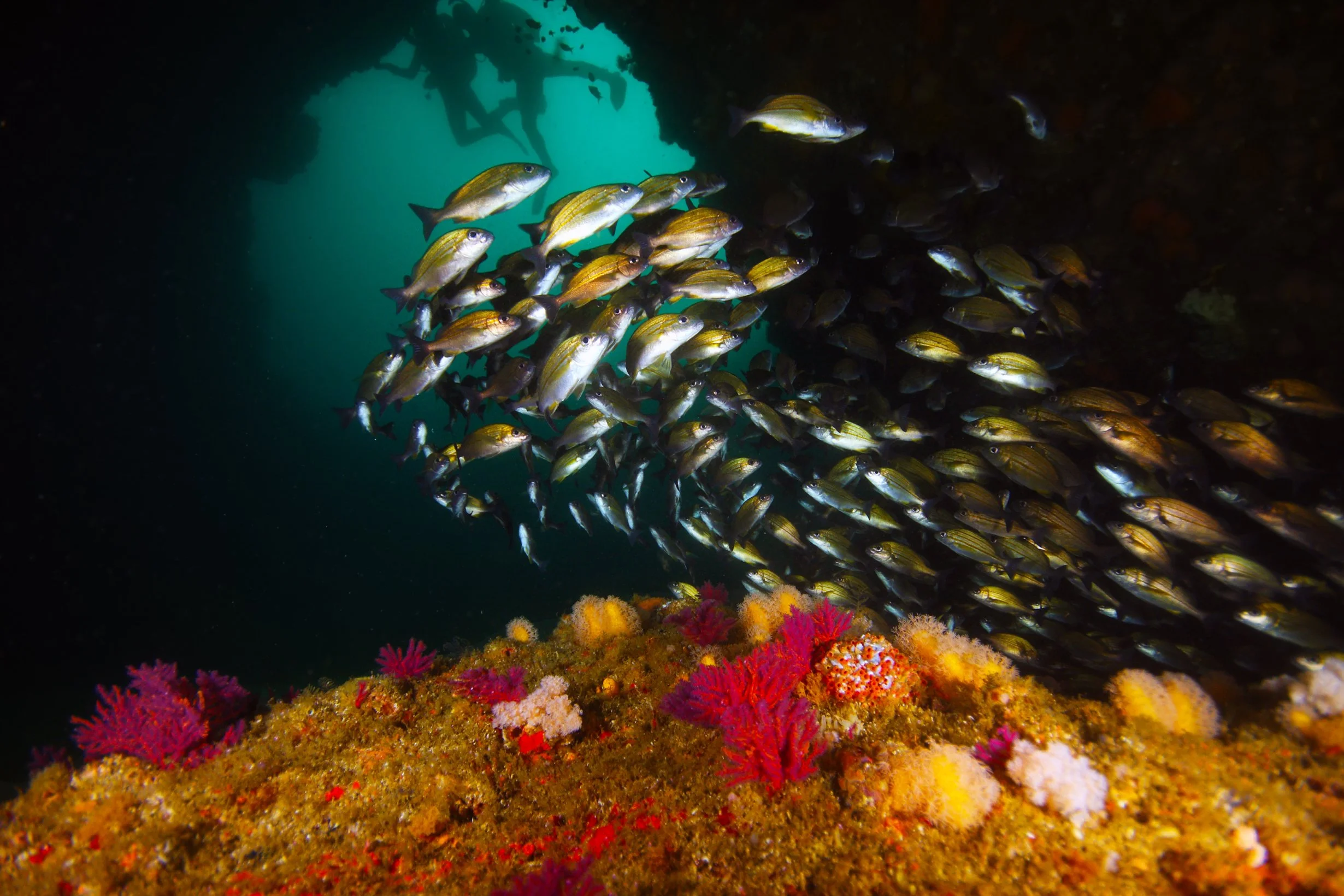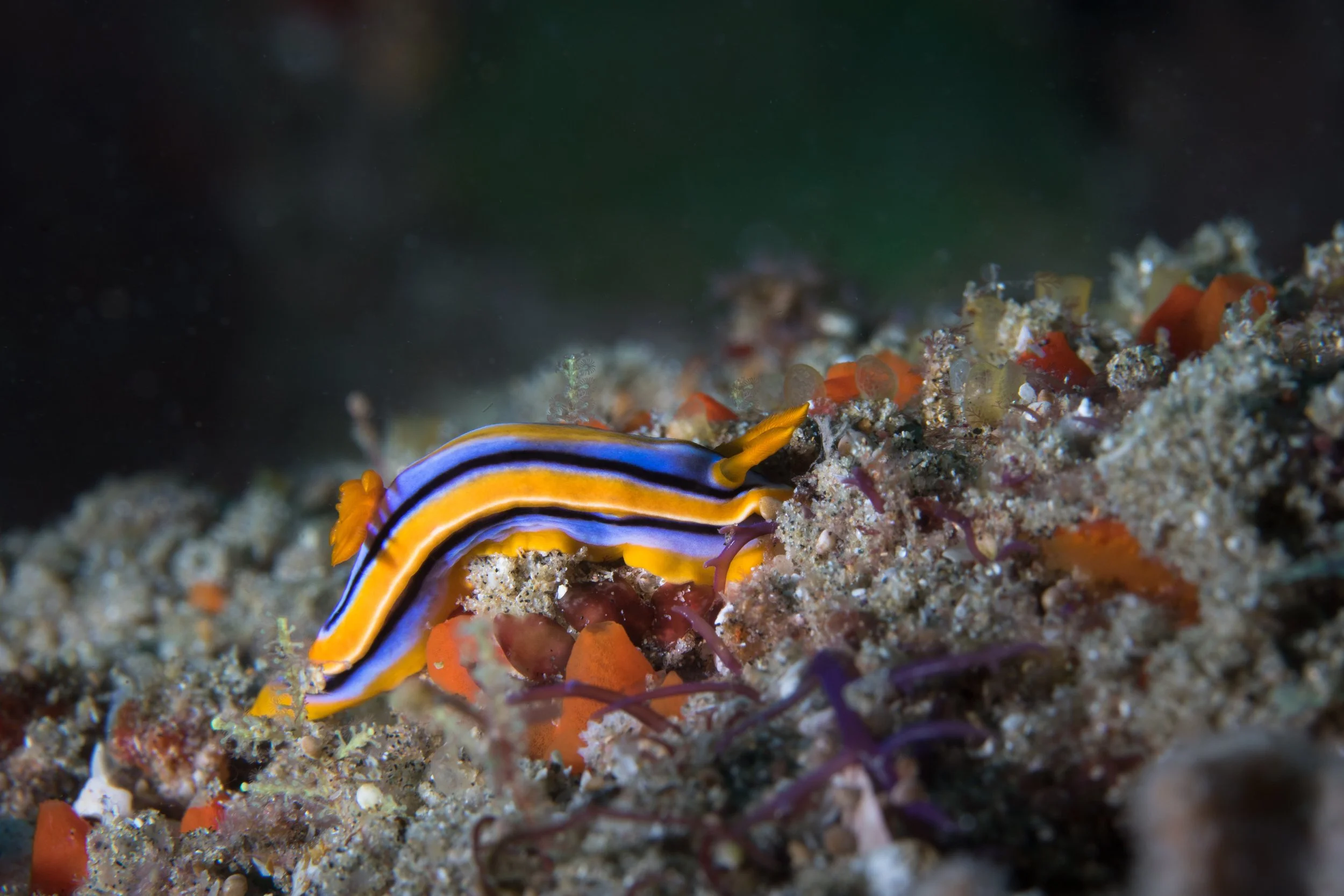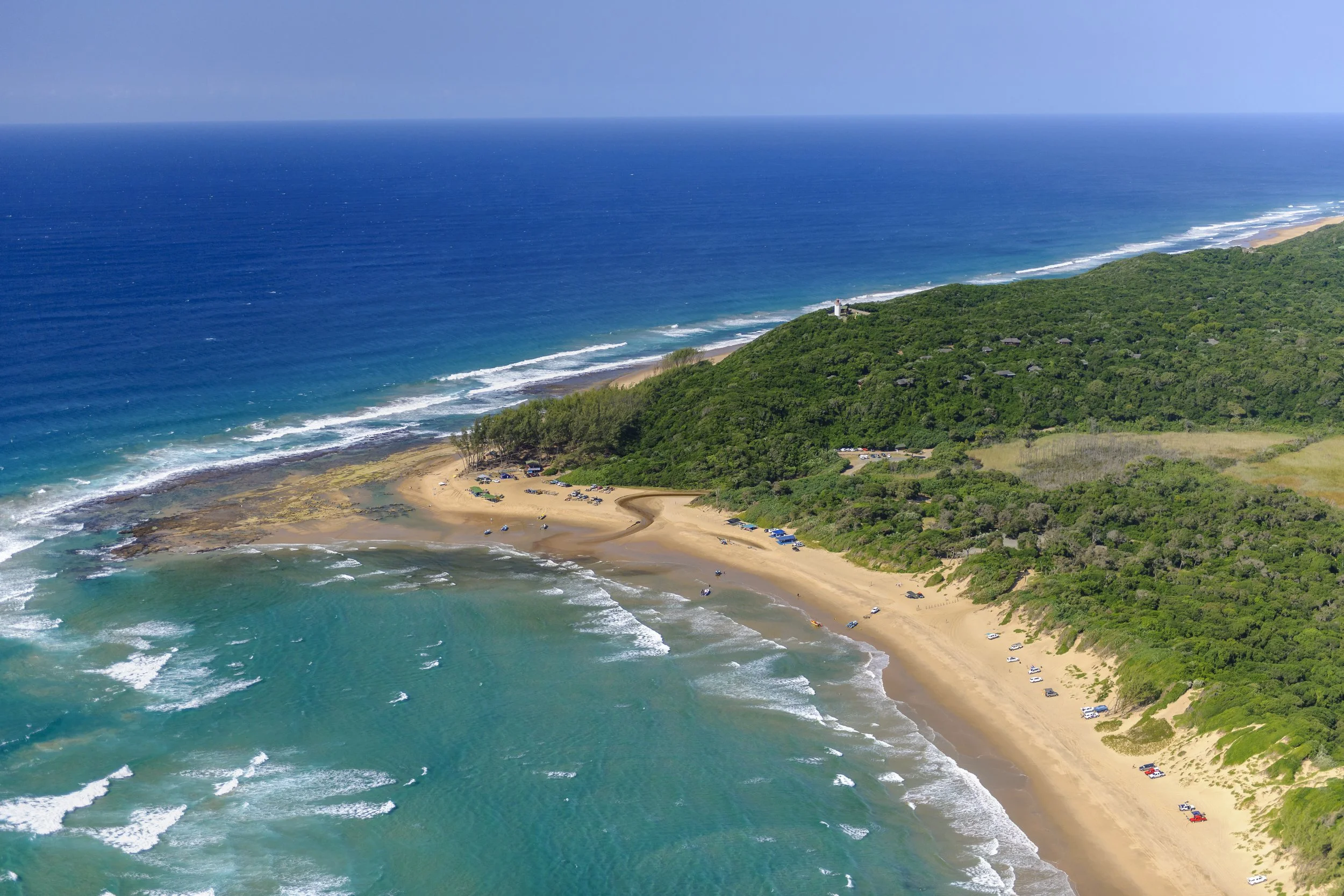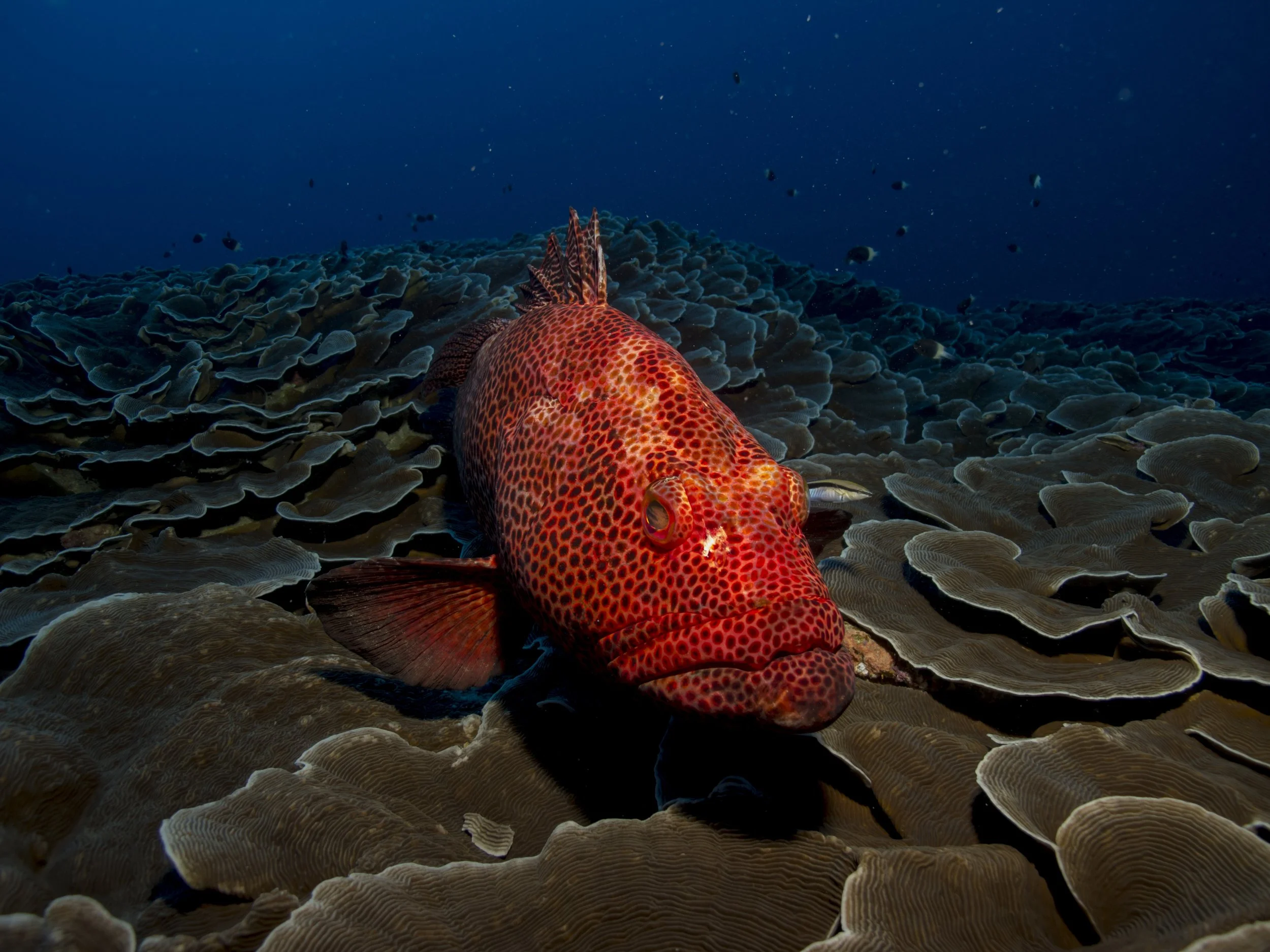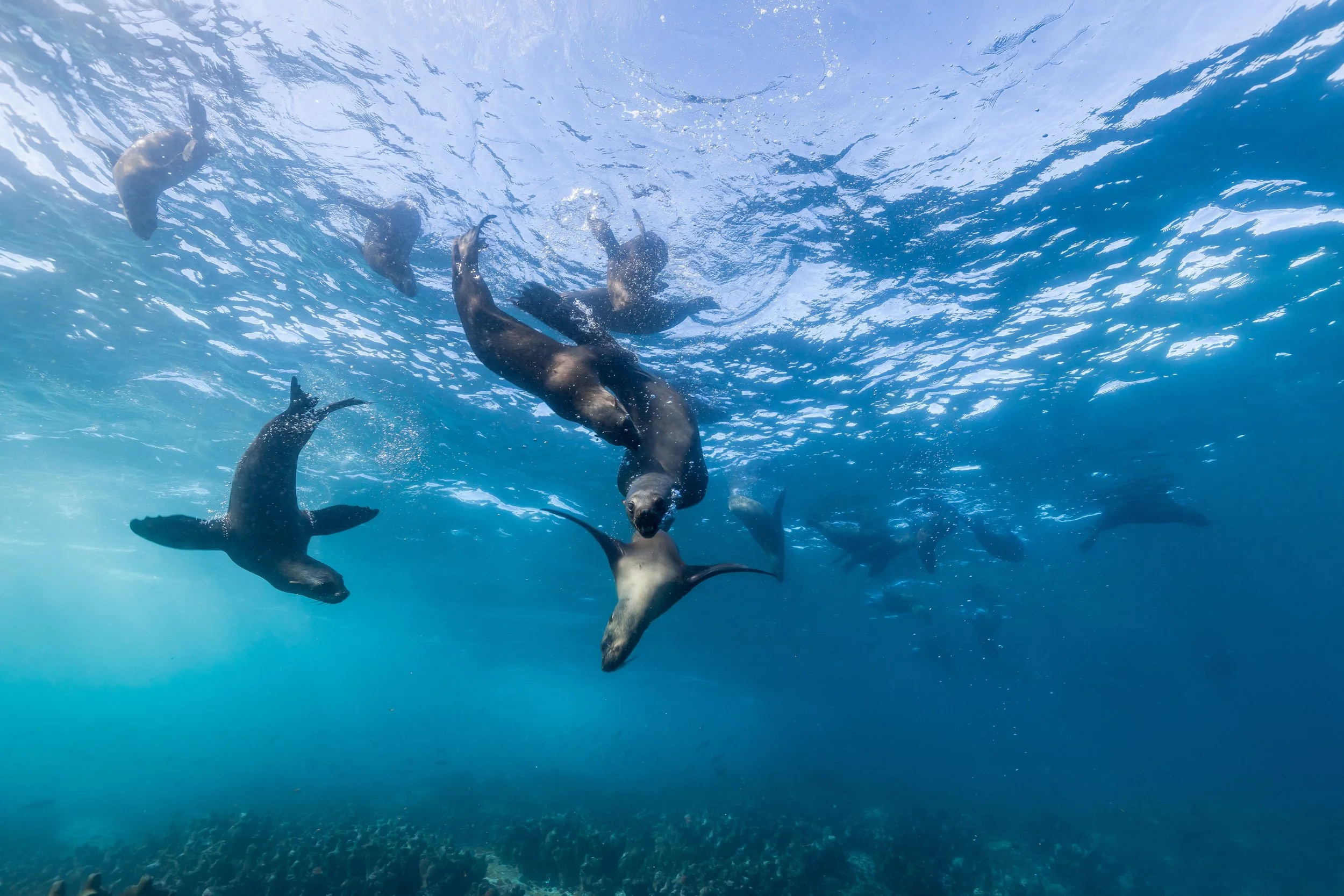All You Need to Know: Scuba Spots in South Africa
Written by René Robinson
Experienced divers know this already, but just because you can dive anywhere doesn't mean you necessarily want to. This is why we’ve put together this handy list of the best scuba diving spots in South Africa. Gear up, and get ready to read about the best dives you can experience in South Africa (possibly even the world).
Aliwal Shoal, KwaZulu-Natal
If you’re the type of person who enjoys an adrenaline-filled dive (more than the usual amount), then the waters of Aliwal Shoal in beautiful KwaZulu-Natal are definitely for you. Popular for its variety of shark species that call these waters home, Aliwal Shoal is known as one of the top dive sites in South Africa. The area is Marine Protected, meaning that no form of fishing, or interacting with the marine life negatively, is allowed.
Best time to visit: This spot is great to dive in all throughout the year, but the annual Sardine Run happens in June and July and is a sight to see!
Dive Operators: Aliwal Dive Centre, Blue Ocean Dive Resort, ScubaXcursion, Diving Down South.
Look out for: Ragged sand tiger sharks, rays, yellow and black striped coachmen, potato bass, paper fish, eels, sand-tiger sharks, wrasses, and turtles.
Experience level needed: Open Water to Advanced Open Water (and all qualifications above AOW).
Recommended wetsuit mm: No less than 5mm, waters are warm in summer but deeper depths and long dives can get chilly with anything thinner. For those that get cold easily, don’t let the chills spoil your diving experience; bring along (or rent) an extra chicken vest and hoodie.
Honourable Reef Mentions: The Cathedral, Raggies Cave, Chunnel, Produce Wreck, North Sands, Howards Castle.
How to get there: From King Shaka International Airport, situated near the city of Durban, Aliwal Shoal is a 1 hour and 30 min drive.
Sodwana Bay, KwaZulu-Natal
By far the most popular, and understandably so, this dive spot cannot be missed if you have a love for diving! Sodwana Bay is a stunning, remote diving town that is built around this activity. Hosting some of the world’s best dive sites, Sodwana will steal your heart from your very first dive there. It’s loved by locals and international travellers alike. Known for both macro and micro-life, Sodwana caters for all types of divers. Pack your most tropical, laid-back outfits for this paradise known as South Africa’s best dive spot!
Best time to visit: April through to September, with visibility especially good in May and June.
Dive Operators: Coral Divers, Sodwana Bay Lodge Scuba Centre, Amoray Diving, Adventure Mania, Pisces Diving, SeaXplorer Dive Centre, Reefteach Sodwana Bay, Nemo Diving & Accommodation, Triton Dive Lodge.
Look out for: With 90+ species of corals and sponges, and over 1.200 fish species, Sodwana will never disappoint. Look out for game fish like barracuda, kingfish, or hunting potato bass. If you’re lucky you’ll see some dolphins on your boat ride out, or a turtle on the surface before entering the water. You’ll see some parrotfish, green, leatherback, and loggerhead turtles, nudibranchs, honeycomb and moray eels, scorpionfish, and devil firefish. You’ll also see countless schooling fish, some ghost pipefish, paper fish, cleaner shrimp, blue-spotted ribbontail ray and gorgeous manta rays. Once a year, turtles lay their eggs on Sodwana’s shores in protected areas, and experiences are available to see the hatchlings slither to the ocean in the moonlight. These experiences help fund their protection and no contact or close interactions are allowed.
Experience level needed: Open Water to Advanced Open Water (and all qualifications above AOW).
Recommended wetsuit mm: No less than 5mm, as waters are warm in summer but deeper depths and long dives can get chilly with anything thinner. For those that get cold easily, don’t let the chills spoil your diving experience, feel free to bring along (or rent) an extra chicken vest and hoodie.
Honourable Reef Mentions: Simon’s Cave, Anton’s, Roonies, Bikini, Mellow Yellow, Wayne’s World, Stringer, and 7-mile.
How to get there: Sodwana Bay is remote but can be accessed from either King Shaka International Airport or OR Tambo International airport by car. The trips, 4 hours 30 min and 9 hours respectively, will take you through stunning South African landscapes.
Atlantic Coast, Western Cape
Dive sites in Cape Town referred to as the “Atlantic Coast” are all on the western side of the Cape Peninsula. Although diving in Cape Town can be tricky, and conditions are not as consistently good as at places higher up the coast, diving is diving, and even an ‘average’ dive can be enjoyable. Diving near Cape Town is especially unique due to the mesmerising kelp forests, incomparable seal experiences, and dolphin and whale sightings.
Best time to visit: Summer is the best time to dive here as visibility is best due to the south-easterly wind that brings colder, clearer waters.
Dive Operators: Alpha Dive Centre, Pisces Divers, Into The Blue, Dive Action, Cape Town Dive Centre.
Experience level needed: Open Water to Advanced Open Water (and all qualifications above AOW).
Recommended wetsuit mm: Water is much, much, much cooler on this side of the country and we highly recommend coming prepared. Make sure to wear a 5 to 7 mm full suit and consider bringing along (or renting) a chicken vest and hoodie to keep your core and head warm. Booties are also highly recommended.
Honourable Reef Mentions: Justin’s Caves, Sandy Cove, The Antipolis, The Maori, The Aster, MV Katsu Maru, Vulcan Rock, Star Walls.
How to get there: Reefs are widely spread out in this area, and drive times may differ, but from Cape Town International Airport the city of Cape Town is less than 45 mins away, which will make a good base for your trip. Most dive sites will be within a 2-hour drive and will show you some of the most stunning spots in Cape Town!
False Bay, Western Cape
Historic wrecks, colourful reefs, and mystical kelp forests are 3 of the many reasons you should go for a dive in False Bay. Home to the tiniest of the micro life family, all the way to the king of the ocean (great white shark), False Bay is a playground for any diver who appreciates marine life.
Best time to visit: You can dive in False Bay all year round, but locals suggest the best time to go is between February and June. North-westerly winds in winter cleanse the bay and ensure better visibility.
Dive Operators: Alpha Dive Centre, Pisces Divers, Into The Blue, Dive Action, Cape Town Dive Centre.
Look out for: Gully sharks, seals, shy sharks, crabs and other species of small fish, Cape fur seals, nudibranchs, klipfish, pipefish, cuttlefish.
Experience level needed: Open Water to Advanced Open Water (and all above AOW).
Recommended wetsuit mm: As mentioned above, water is considerably cooler on this side of the country, and you’ll want to be prepared. Make sure to wear a 5 to 7 mm full suit and consider bringing along (or renting) a chicken vest and hoodie to keep your core and head warm. Booties are also highly recommended.
Honourable Reef Mentions: Partridge Point (for a Cape fur seal dive), Whittle Rock, The SAS Pietermaritzburg (a perfect wreck to those new to wreck-diving), The Smitswinkel Bay wrecks, The Clan Stuart wreck (also great for beginners), The A-Frame (popular shore-dive in Simon’s Town), Castle Rock and Pyramid Rock (a popular cow shark dive).
How to get there: Reefs are widely spread out, similarly to the Atlantic Coast, and drive times may differ, but from Cape Town International Airport, Simon’s Town is just more than 1 hour away. Most dive sites will be within a 2-hour drive and the surrounding scenery will leave you breathless!
We hope this list has inspired you to indulge in diving in South Africa’s waters. If a visit to South Africa sounds like the next adventure you’d like to embark on, we have you sorted. Read all about South Africa in our Pocket Guide or visit our website and customise your own scuba diving adventure with our flexible trip builder!


